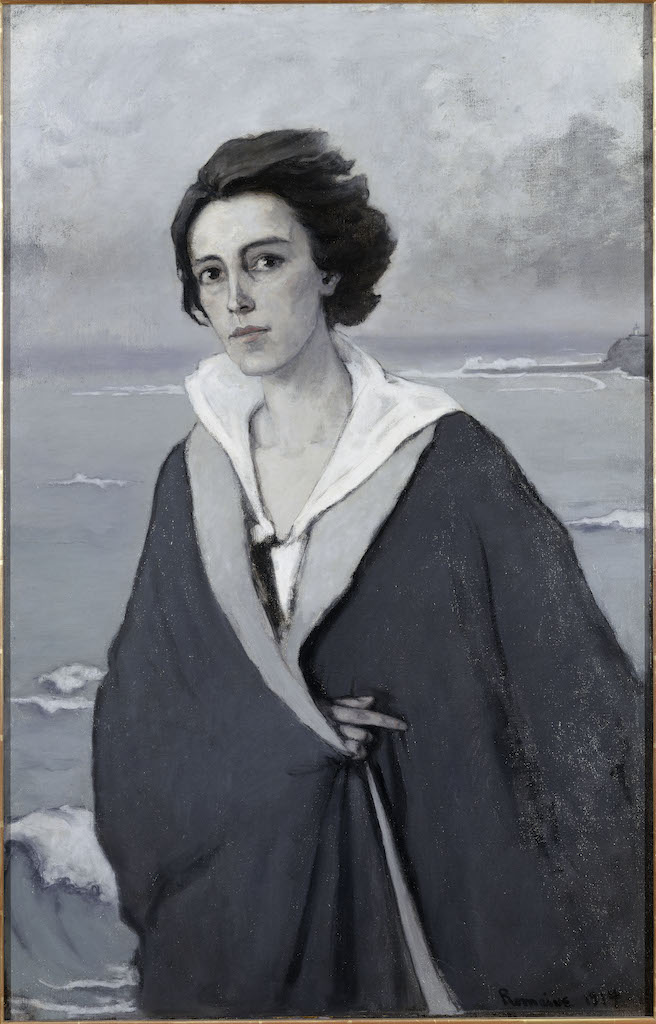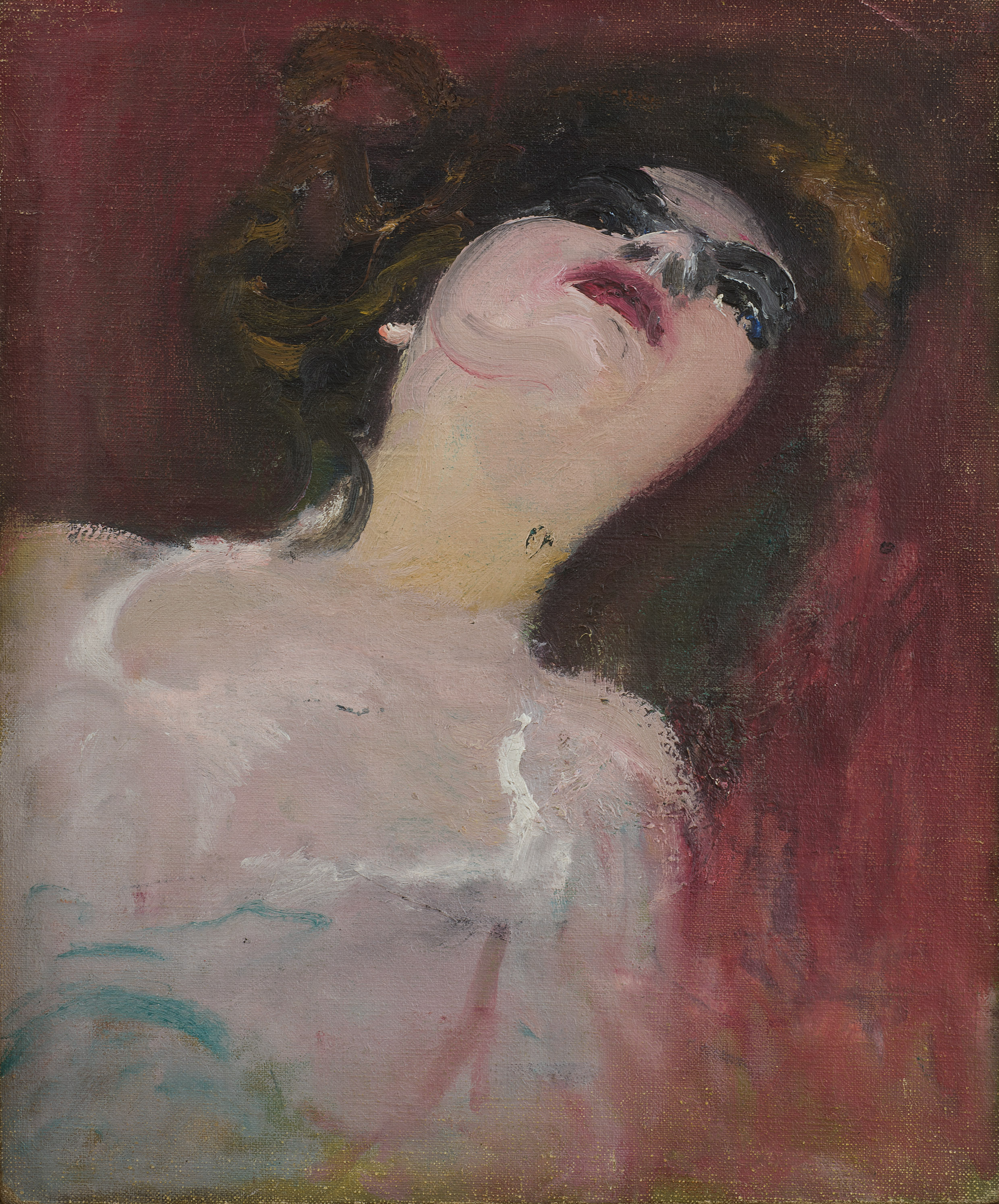Pionnières: Artistes dans le Paris des années folles, Musée du Luxembourg, Paris review - thrilling and slightly flawed | reviews, news & interviews
Pionnières: Artistes dans le Paris des années folles, Musée du Luxembourg, Paris review - thrilling and slightly flawed
Pionnières: Artistes dans le Paris des années folles, Musée du Luxembourg, Paris review - thrilling and slightly flawed
Revealing survey of women artists in 1920s Paris
The hidden history of women artists continues to generate some ground-breaking exhibitions that contribute to a radical re-assessment of art and cultural history. This is a welcome trend, though not entirely without risk, as a new show in Paris demonstrates, and as other exhibitions have managed less convincingly.
Pionnières – Artistes dans le Paris des Années folles is an intelligently contextualised and broad-ranging survey of women’s art in the Roaring Twenties, at the Musée du Luxembourg. The show, which focuses on Paris, provides a revealing, if at times erratic, overview of the way in which women, from Marie Vassilieff to Tamara de Lempicka, and from Chana Orloff to Claude Cahun played a part in opening up a culture that had hitherto been dominated by men.
Avoiding the tendency for shows with a feminist message being overly didactic, the art is contextualised in a way that is entertaining as well as informative. There is fascinating footage of women retouching prosthetic facial masks to hide the shock of war injury, female factory operatives tram drivers and mechanics, and, among other archive treasures, a hilarious film starring Josephine Baker and a number of sporting events.
There is something thrilling in the effervescence and innovation that characterises the art on display. It is  indeed this exuberance and sense of treading on new ground that holds the show together. The curators, Corinne Morineau and Lucia Pesapane, have skilfully assembled some very varied work, grouped according to themes that illuminate their argument without being academic. They describe a movement that grew out of the multiple social and political dislocations that followed the First World War, when women took over the work of men at the front. The carnage had shaken up many of the certainties of European culture, and art reached towards a new kind of hedonism, fuelled by women who were discovering a new self-confidence, reflected in clothes, dance styles, as much as sexual freedom.
indeed this exuberance and sense of treading on new ground that holds the show together. The curators, Corinne Morineau and Lucia Pesapane, have skilfully assembled some very varied work, grouped according to themes that illuminate their argument without being academic. They describe a movement that grew out of the multiple social and political dislocations that followed the First World War, when women took over the work of men at the front. The carnage had shaken up many of the certainties of European culture, and art reached towards a new kind of hedonism, fuelled by women who were discovering a new self-confidence, reflected in clothes, dance styles, as much as sexual freedom.
Many of these "pioneering" artists broke loose from the conventions of the art world – including the male-dominated paths of the avant-garde. They were often forced by circumstance to earn a living from relying on a diversity of skills, from portraiture to work for the theatre and ballet, and from illustration to haute couture. They celebrate plenty of imaginative innovation that makes a virtue out of necessity as well as work that defies categorisation. The characterful puppets made by Sophie Taeuber-Arp (1889-1943) – the stars of her recent Tate Modern show – and Marie Vassilieff (1884-1957) stand out as lively 3D work possessed of other-worldly and humorous presence. These constructions for the stage are as much the work of fine artists as the massive sculptures of Chana Orloff (1888-1968), which combine the formal lines of art deco with the numinous quality of tribal art.
Explorations of gender and sexuality hold a central place in the exhibition, as if the blurring or erasure of well-defined identities was in some way connected to the liminal ferment that produces insight, fresh vision and experiment. Familiar from Tom Hopper’s film The Danish Girl (2015) – starring Eddie Redmayne, the work of Gerde Wegener (1886-1940), featuring her husband – one of the first men to undertake gender re-assignment in the 1920s take an important place in the show. They are more interesting as documents than as outstanding works of art. The same can be said as the over-represented work of Tamara de Lempicka (1898-1980), whose passion for the French singer Suzy Polidor, inspired her to heights of sapphic near-kitsch, technically accomplished in a virtuosic way, but without much soul or personality. Lempicka deserves a place in the context of an exhibition that grants women artists their rightful place, but as with other exhibitions that set out to rescue women artists from oblivion, the is always a danger: some second-rate artists are sometimes given an excessive amount of importance and gallery space. There is for instance only one painting by Romaine Brooks Au bord de la mer (pictured above) whose work deserves at least as much space as Lempicka's.
 The show is a little uneven in artistic terms: nevertheless, there is plenty of overlooked or less well-known work: the startling paintings of women by Emilie Charmy (1878-1974) (pictured left) are as rough and potent as figurative work from our own time, and reflect, as much of the other work in the show, a woman’s subjective take on feminine pleasure instead of the voyeuristic detachment of a male gaze. There is an unsentimental intimacy and authenticity in the paintings of the Polish-born painter Mela Muter (1876-1967). The little-known artist Juliette Roche (1884-1980), the subject of a revealing retrospective touring France during the coming year, draws on magical realism and an outsider sensibility: her work here, American Picnic is part-riff on Matisse’s The Dance, and part a multi-coloured large-scale work that is totally her own.
The show is a little uneven in artistic terms: nevertheless, there is plenty of overlooked or less well-known work: the startling paintings of women by Emilie Charmy (1878-1974) (pictured left) are as rough and potent as figurative work from our own time, and reflect, as much of the other work in the show, a woman’s subjective take on feminine pleasure instead of the voyeuristic detachment of a male gaze. There is an unsentimental intimacy and authenticity in the paintings of the Polish-born painter Mela Muter (1876-1967). The little-known artist Juliette Roche (1884-1980), the subject of a revealing retrospective touring France during the coming year, draws on magical realism and an outsider sensibility: her work here, American Picnic is part-riff on Matisse’s The Dance, and part a multi-coloured large-scale work that is totally her own.
Exhibitions that rescue women from invisibility, or their status as muses, subjects and significant others – as the Tate Modern’s massive show on Anni Albers – often make excessive reference to the men in their lives – in Albers’s case, her husband, Gropius and other towering male egos of the Bauhaus. Pionnières moves beyond this, with a show that inhabits a world of women that is emerging from obscurity on its own steam. This is eye-opening as well as truly liberating, and for that alone, it is worth making the journey to Paris, to re-discover the Roaring Twenties from a radically new perspective.
rating
Explore topics
Share this article
The future of Arts Journalism
You can stop theartsdesk.com closing!
We urgently need financing to survive. Our fundraising drive has thus far raised £49,000 but we need to reach £100,000 or we will be forced to close. Please contribute here: https://gofund.me/c3f6033d
And if you can forward this information to anyone who might assist, we’d be grateful.

Subscribe to theartsdesk.com
Thank you for continuing to read our work on theartsdesk.com. For unlimited access to every article in its entirety, including our archive of more than 15,000 pieces, we're asking for £5 per month or £40 per year. We feel it's a very good deal, and hope you do too.
To take a subscription now simply click here.
And if you're looking for that extra gift for a friend or family member, why not treat them to a theartsdesk.com gift subscription?
more Visual arts
 'We are bowled over!' Thank you for your messages of love and support
Much-appreciated words of commendation from readers and the cultural community
'We are bowled over!' Thank you for your messages of love and support
Much-appreciated words of commendation from readers and the cultural community
 Photo Oxford 2025 review - photography all over the town
At last, a UK festival that takes photography seriously
Photo Oxford 2025 review - photography all over the town
At last, a UK festival that takes photography seriously
![SEX MONEY RACE RELIGION [2016] by Gilbert and George. Installation shot of Gilbert & George 21ST CENTURY PICTURES Hayward Gallery](https://theartsdesk.com/sites/default/files/styles/thumbnail/public/mastimages/Gilbert%20%26%20George_%2021ST%20CENTURY%20PICTURES.%20SEX%20MONEY%20RACE%20RELIGION%20%5B2016%5D.%20Photo_%20Mark%20Blower.%20Courtesy%20of%20the%20Gilbert%20%26%20George%20and%20the%20Hayward%20Gallery._0.jpg?itok=7tVsLyR-) Gilbert & George, 21st Century Pictures, Hayward Gallery review - brash, bright and not so beautiful
The couple's coloured photomontages shout louder than ever, causing sensory overload
Gilbert & George, 21st Century Pictures, Hayward Gallery review - brash, bright and not so beautiful
The couple's coloured photomontages shout louder than ever, causing sensory overload
 Lee Miller, Tate Britain review - an extraordinary career that remains an enigma
Fashion photographer, artist or war reporter; will the real Lee Miller please step forward?
Lee Miller, Tate Britain review - an extraordinary career that remains an enigma
Fashion photographer, artist or war reporter; will the real Lee Miller please step forward?
 Kerry James Marshall: The Histories, Royal Academy review - a triumphant celebration of blackness
Room after room of glorious paintings
Kerry James Marshall: The Histories, Royal Academy review - a triumphant celebration of blackness
Room after room of glorious paintings
 Folkestone Triennial 2025 - landscape, seascape, art lovers' escape
Locally rooted festival brings home many but not all global concerns
Folkestone Triennial 2025 - landscape, seascape, art lovers' escape
Locally rooted festival brings home many but not all global concerns
 Sir Brian Clarke (1953-2025) - a personal tribute
Remembering an artist with a gift for the transcendent
Sir Brian Clarke (1953-2025) - a personal tribute
Remembering an artist with a gift for the transcendent
 Emily Kam Kngwarray, Tate Modern review - glimpses of another world
Pictures that are an affirmation of belonging
Emily Kam Kngwarray, Tate Modern review - glimpses of another world
Pictures that are an affirmation of belonging
 Kiefer / Van Gogh, Royal Academy review - a pairing of opposites
Small scale intensity meets large scale melodrama
Kiefer / Van Gogh, Royal Academy review - a pairing of opposites
Small scale intensity meets large scale melodrama
 Jenny Saville: The Anatomy of Painting, National Portrait Gallery review - a protégé losing her way
A brilliant painter in search of a worthwhile subject
Jenny Saville: The Anatomy of Painting, National Portrait Gallery review - a protégé losing her way
A brilliant painter in search of a worthwhile subject
 Abstract Erotic, Courtauld Gallery review - sculpture that is sensuous, funny and subversive
Testing the boundaries of good taste, and winning
Abstract Erotic, Courtauld Gallery review - sculpture that is sensuous, funny and subversive
Testing the boundaries of good taste, and winning
 Edward Burra, Tate Britain review - watercolour made mainstream
Social satire with a nasty bite
Edward Burra, Tate Britain review - watercolour made mainstream
Social satire with a nasty bite

Add comment